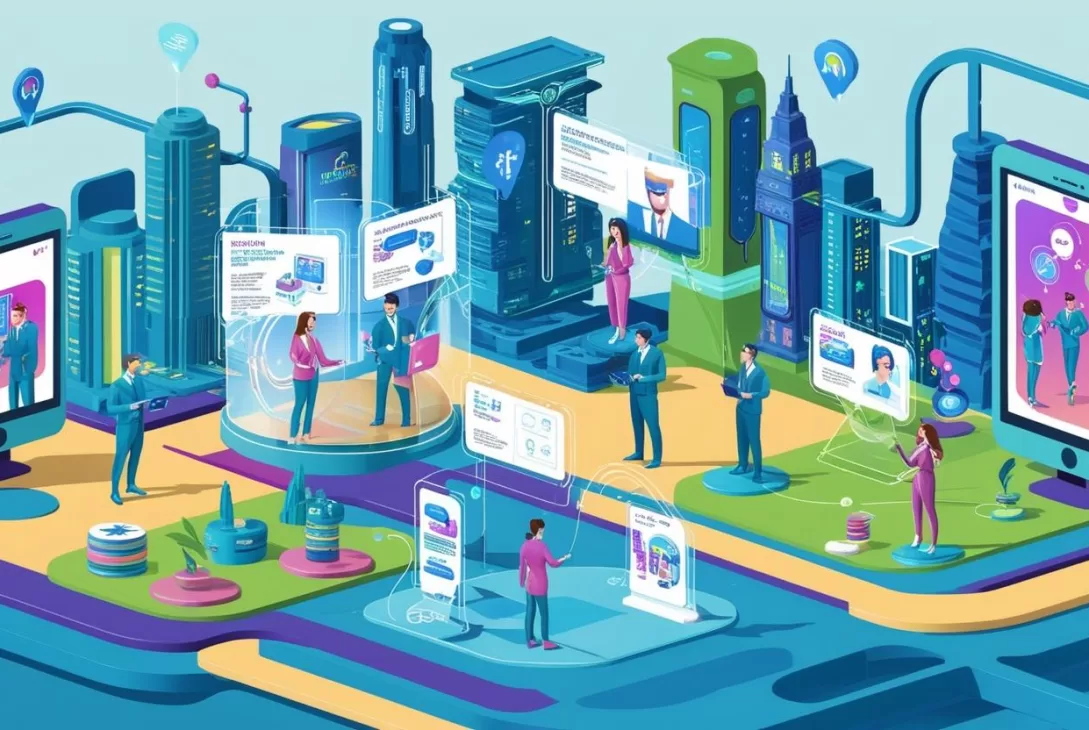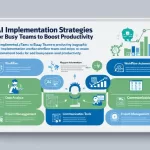Leveraging the Metaverse to Transform Digital Marketing Strategies
When you hear the term “metaverse,” what comes to mind? For some, it’s futuristic headsets and virtual reality. For others, it’s gaming. But did you know the metaverse is quickly becoming a game-changer in the world of digital marketing?
In this blog post, we’ll break down what the metaverse is and how you can use it to upgrade your marketing strategy. Whether you’re a small business owner, a marketing professional, or just curious about emerging tech, keep reading—we’ll simplify it all for you.
What Is the Metaverse, Really?
Let’s clear things up first. The metaverse is more than a buzzword. Think of it as a virtual world where people work, play, shop, and socialize using digital avatars. It’s like a blend of social media, video games, virtual reality (VR), and augmented reality (AR)—all rolled into one immersive experience.
If that sounds like sci-fi, remember how strange online shopping seemed 20 years ago? Now, it’s the norm. The metaverse may be heading in that same direction.
Why the Metaverse Matters for Digital Marketing
As the digital landscape evolves, brands need to stay ahead. Enter the metaverse—a new way to reach customers in a more interactive and engaging environment.
Here’s how it’s making waves in the world of digital marketing strategy:
- Immersive brand experiences: Brands can create entire virtual worlds where users can explore, connect, and engage. Imagine walking through a 3D showroom instead of scrolling through product images.
- Greater personalization: By interacting within the metaverse, companies can collect valuable data to create highly personalized experiences.
- New advertising channels: Traditional ads are easy to ignore. In the metaverse, advertising can take the form of virtual billboards, branded games, and even digital wearables.
- Community building: Virtual worlds let brands build tighter connections with users, not through static posts, but shared experiences and events.
Examples of Metaverse Marketing in Action
So, who’s already doing this? Big-name brands are paving the way:
- Nike: Launched a virtual world called Nikeland inside Roblox. Users can dress their avatars in branded gear and compete in challenges—blending fun with brand visibility.
- Gucci: Hosted a digital art and fashion experience, selling virtual bags that sometimes sold for more than physical versions.
- Wendy’s: Created its own branded restaurant experience inside Fortnite to engage with a younger audience through gameplay.
These moves aren’t just hype—they’re highly targeted strategies to connect with communities already spending time in virtual spaces.
How Small and Medium Businesses Can Join the Metaverse
You might be thinking, “But I don’t have Nike’s budget!” That’s okay. The metaverse isn’t just for global giants. There are affordable ways for small businesses to get involved too.
Here are a few starting points:
- Virtual storefronts: Platforms like Decentraland or Spatial make it possible to set up interactive spaces where visitors can explore your offerings.
- AR-powered product demos: Use augmented reality filters on social media to let customers “try” a product—like makeup or furniture—before buying.
- Host virtual events: From product launches to Q&A sessions, virtual events can foster deeper engagement than a typical Zoom call.
Even dipping your toes into these new environments can show your customers you’re forward-thinking and ready to innovate.
Tips for Creating a Metaverse Marketing Strategy
Ready to test the waters? Here’s how to start building your metaverse digital marketing strategy step by step:
1. Understand Your Audience
Who are your customers, and are they already exploring virtual spaces? Gen Z and millennials are leading the charge. If these age groups are part of your target market, your metaverse potential is high.
2. Choose the Right Platform
Not all virtual platforms are the same. Roblox is popular with gamers and younger users, while Decentraland is focused on digital commerce and creativity. Pick one that best aligns with your brand and audience.
3. Start Small and Experiment
You don’t need to go all-in from day one. Start with a single tactic—maybe a branded filter or a virtual booth at an AR-enabled event. Then, build from there as you learn what works.
4. Focus on Engagement, Not Just Promotion
The magic of the metaverse is interaction. Instead of pushing products, think about how users can explore your brand. Can they play a game, try a product in 3D, or attend a workshop?
5. Measure and Optimize
Like any digital campaign, track your results. Monitor engagement, dwell time, and conversion rates to see what’s effective—and adjust as you go.
A Quick Reality Check
The truth is, the metaverse is still evolving. We’re watching a new digital world being built in real time, and yes, there are risks and unknowns. But remember when social media was new? Early adopters like Red Bull and Starbucks dominated the conversation—because they showed up early.
Now’s the time to be curious, not intimidated. Don’t worry about being perfect. The goal is to learn, test, and grow.
The Future of Digital Marketing is Immersive
To wrap things up, the metaverse may seem like a bold leap, but it’s actually the natural next step in digital marketing evolution. As online audiences crave deeper connections and richer experiences, brands that meet them in these virtual spaces will stand out.
Think of it this way: If websites made your business digital, and social media made it social, the metaverse will make it immersive.
So, are you ready to reimagine your marketing in 3D?
Final Thoughts
Getting involved in the metaverse doesn’t mean you need virtual reality goggles or a tech team on speed dial. Use what you already have—creativity, curiosity, and a good understanding of your audience—to take the first step.
The future isn’t coming. It’s here. And the brands that embrace it now will lead the way.
If you’re looking to explore how the metaverse can power up your own marketing efforts, stay tuned for our upcoming beginner’s guide on choosing the right platform and building your first virtual campaign.
Until then—get curious, get creative, and most of all—get ready.









